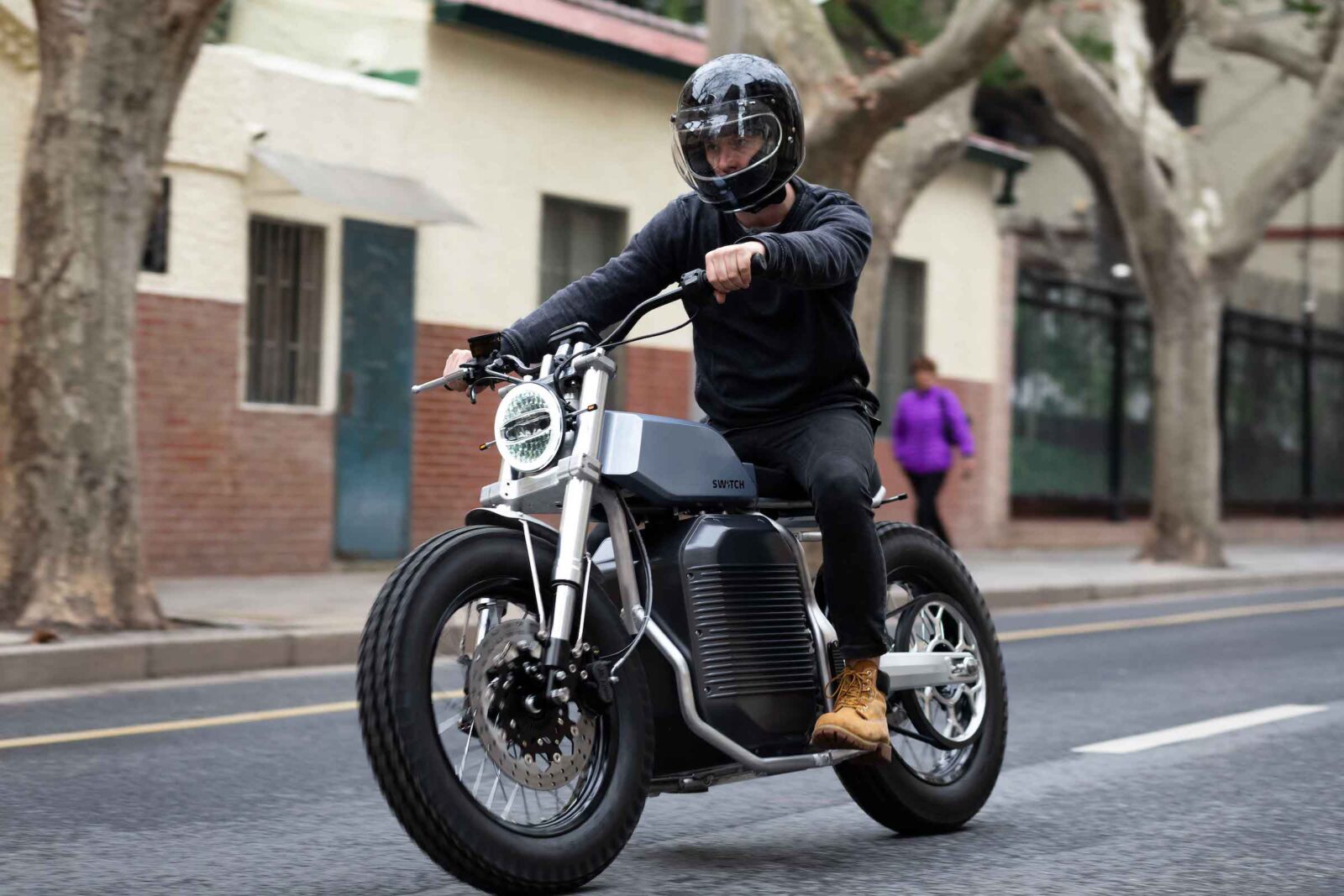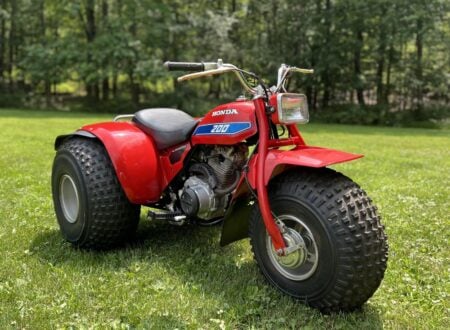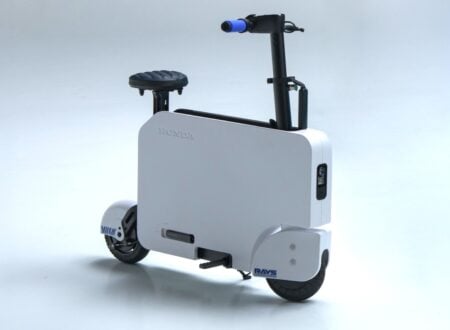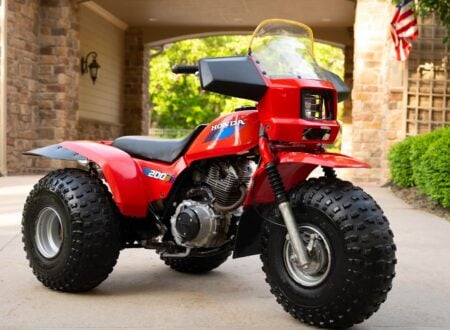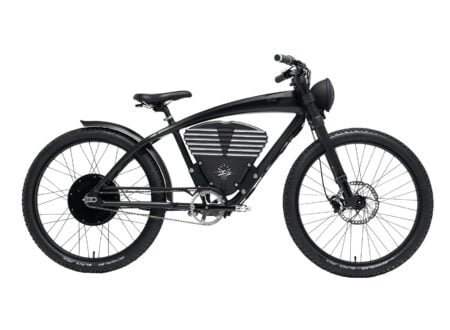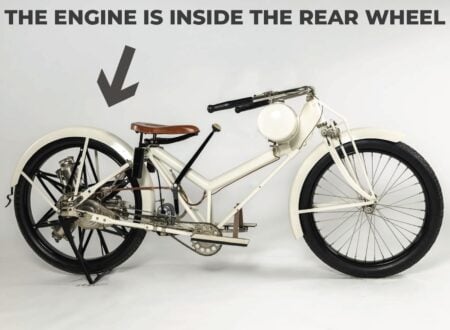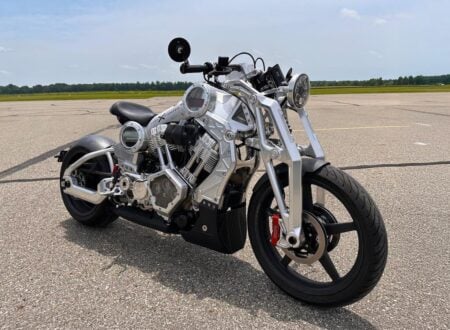This article was written by Matthew Waddick of Shanghai Customs + Switch. When possible we like to bring you the story of a build in the words of the team that built it, to cut out the middle man and give you direct insight into their thought process and methodology.
The eScrambler – Design
The eScrambler is designed entirely from scratch by ex-Yamaha Japan Advanced Labs Industrial Designer and former Danish Flat Tracking champion Michel Riis. Michel comes from a speedway and motocross family, has a master’s degree in industrial design from the Design School of Kolding and has been building and racing bikes since he was 12 years old. Michel’s design brief was for a mid-size motorcycle with similar proportions to the Shanghai Customs eTRACKER concept, a more powerful mid drive motor, belt drive, refined design and production ready – meaning toolings, CNC welding jigs and molded parts. The bike also needed to be able to handle crazy-fast speeds and have good practical ‘real world’ range (up to 150km/hr, 0–100 in 3.2 seconds, and minimum 150km range per charge). This required a completely new design and development from the ground up.
There are a ton of electric scooters, light electric motorcycles (mainly in the off-road segment), as well as expensive electric sports bikes. However, there still isn’t much in this high-level custom styled mid-sized motorcycle segment and definitely nothing I’ve seen in production so far. This is mostly due to design challenges – it is challenging to make these look good whilst delivering speed and range at a price that the consumer can accept. The amount of suppliers needed to complete a project like this as well as homologation and putting it into production – it becomes too difficult for most.
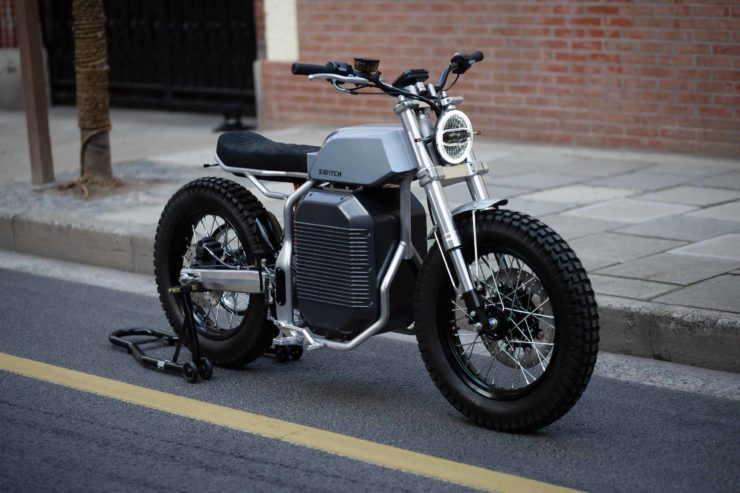
Having such a talented designer like Michel on the team, who also has the ‘hands on’ custom and practical skills, meant we could design the bike from the inside out, rather than wasting time on over the top sketches and building down trying to make them work. Michel started off with some basic dimensions and proportion layouts which were loosely based on the concept eTracker, before sketching and adding in the CAD over the top. It was then a process of back and forth – cad – sketching – cad – sketching on each component until it was ready to prototype. We started with the core structure, box and frame, as opposed to more stylistic items such as the ‘tank’. This meant we could understand the bike more and how it would actually work and fit together. It was all very practical with Matthew’s engineering team building in tandem on the ground. This greatly simplified the process and made assembly of the bike easier and cheaper for mass production.
We want people to understand this bike, see how it is all put together – to demystify electrics and especially not hide that we have a box full with cells. However, the design was not as easy as it looks – in fact it was incredibly difficult. Generally, making a complex product look simple is one of the hardest things to do and this is especially true with electric bikes.
Michel began with basic box sketch designs and built the frame around this. Working in collaboration with the engineering team, myself, Sam Dekok and Hector Alvarez, we developed the initial pack size and unique internal (proprietary) design with a power of 11kWh (going up to 13kwh), which is very big for a midsize motorcycle (the same as the zero SR). The cells are cooled using aluminium and copper heat transfer plates inside the box which dissipate the heat out through the box, covers and cooling fins.
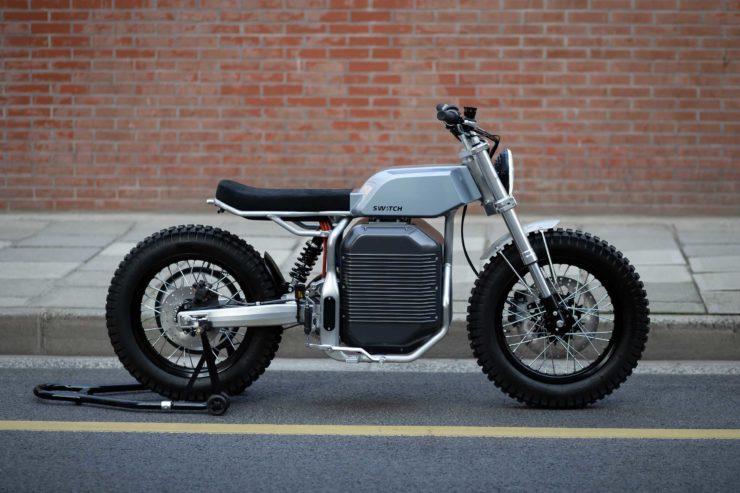
The eScrambler mid drive motor outputs a whopping 50kW so we knew the ride would be fast and a super strong. The vast majority of electric bikes tend to hide parts away under plastics and fairings and use a drop in/perimeter style frame where the box slips in the middle and the controller sits on top under the tank or covering. I wanted a double cradle style tube frame – I’ve always loved them, they’re super strong and add a retro/soulful element that most electric bikes just don’t have. This was easier said than done and quite a few times we almost gave up but eventually Michel, with clever use of lines, bends radiuses and angles, as well as combining with moulded parts with aluminium tubes was able to make it work brilliantly. We ended up working with the same frame engineers who make the ZERO frames so we also had great support and quality to draw on.
The minimalistic and strong swing arm was designed from scratch and a lot of engineering work went into fitting it with the frame as well as the suspension and motor. Michel used a simple silhouette for the shape, making it look simple from a distance, but added a lot of small details to make it stand out when you are next to the bike. ‘I love to have small highlights show the lines I want people to notice’ combined with the shadows the design accents show depending on light and angles.
Another engineering challenge was we wanted the motor and the motor axle in the centre of the swing arm pivot with the belt drive train coming directly off the motor, opposed to some sort of complex gearing or pulley system or forward/back/up motor placement. Again, all of this easier said than done, there is placement issues, motor RPM issues, sprocket ratio issues, swing arm design, the swing arm axle and a lot of work around the bearings and swing arm contact point. In addition, as anyone who has swapped an engine knows, alignment issues with getting the tire lined up in the centre. We have been working closely with Gates who provide the carbon fibre belt – they have been great, and we designed the gorgeous rear sprocket to suit. With such a powerful bike, Michel pushed for a super strong triple tree which he designed to hold our upside-down forks and stunning e-mark and DOT approved LED front headlight and indicators. Rims are 18inch aluminium front and back. We decided to opt out of retro twin shocks and went with a more modern central mono shock thus dropping the tracker name and evolving into trademarked eScrambler, but we do plan on releasing a twin shock eTracker variant with some other subtle modifications in the near future.
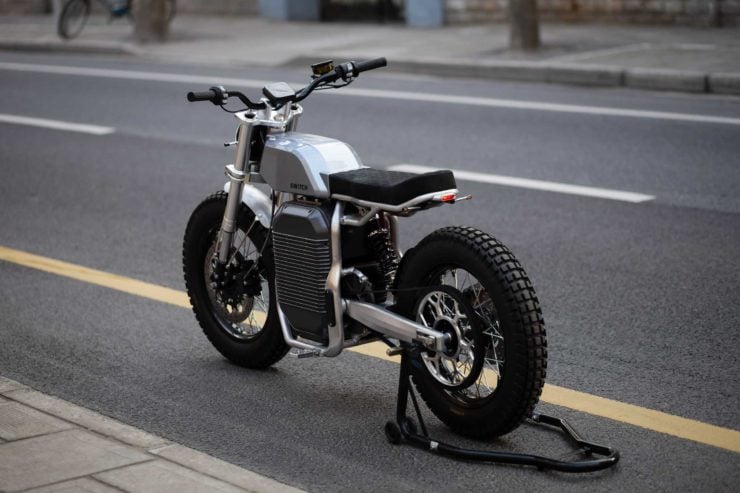
There was a big emphasis on details – the leather seat, controller cooling and electronics pan (which sits under the seat), CNC’d foot pegs, foot levers, rear light, all kinds of mounts and brackets – just an extraordinary amount of work all reproducible for production and simply gorgeous. The bike gets better and better the closer you look which makes it great for photo shoots. There are no imperfections on this bike as we have designed every detail.
Most of the crew are from custom bike backgrounds so the eSrambler was definitely built with this in mind. It’s a production bike, but also a good clean platform to do custom builds on. The sub frame and tank are easily changed, which will change the look of the bike to fit different purposes and styling, including number of seats. Switch is a production motorcycle company, but we will work with custom builders, including Shanghai Customs and others all over the world to develop, build and sell custom versions.
The eScrambler – Technical Details and Specs
Aesthetics are one thing, but for people to really fall in love, the bike needs to perform. One of the main benefits of electric bikes over gas bikes is the awesome instant torque, therefore we wanted a battery/controller/motor combo that could do 0-100 3-3.2 seconds. The truth is we still have a bit to go before we are at full power, but the tech and packing inside is awesome.
The controller can deliver an insane 900amps to the motor and has field weakening, meaning more power at lower voltages. This means we are able to stay at 72v, which is much more stable than the higher voltages, better for homologation purposes and means we can up the amps (currently at 144Ah) for take-off speed. The other tech is pretty cool too and I’ve spent a lot of time on this. The bike has integrated wi-fi so we are able to see real-time updates and performance globally, lap times as well as a plethora of battery monitoring and other diagnostic information from anywhere in the world. This means Michel can be thrashing around the track in Aarhus, Denmark while we can be monitoring, adjusting his settings after each lap/race from Shanghai in real time. The bike is also equipped with built in GPS tracking, digital display, 3 speed modes, cruise control, battery level indicator, regenerative braking, USB phone charging and all the other gadgets that you would expect from a high end electric motorcycle. We are working on the fast charging system at the moment.
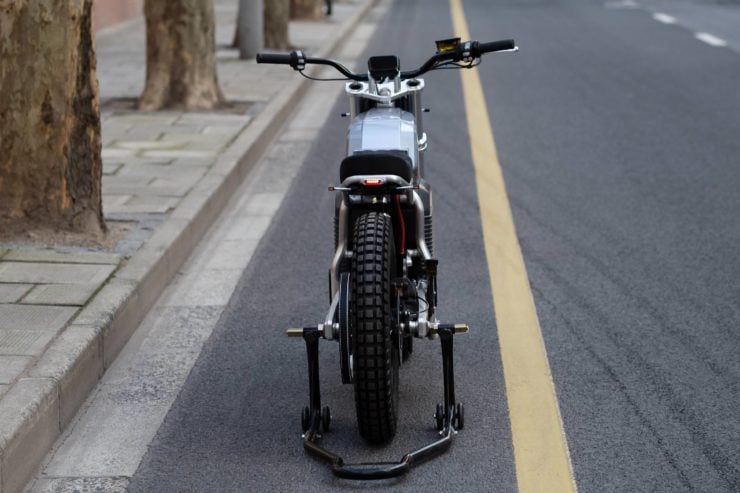
All suppliers of the components on the bike are top quality. A big part of my work has been to get top level suppliers on board and supportive of the project and we couldn’t do it without such support so it’s been great to see! The braking system is supplied by the Spanish company JJuan, forks and rims are used on KTM, Carbon Fibre belts is by Gates USA, Battery cells by Panasonic and the Taiwanese controller company Mopibus (one of the best in the world) is working with us on the tech. We are also developing the ABS system at the moment with Bosch.
The ‘tank’ is another item on electric bikes that always seems to get a lot of comments. Putting a gasoline tank on is just ridiculous, but at the same time, and particularly with this style of bike, some sort of heritage or natural evolution of design is required. This ‘tank’ is another Michel Riis special and he spent a long time on this with numerous designs and trials before we got it right. The lines, the way shadows form on the edges creating the contrasts between the different highlights and shadows is just gorgeous. It’s a super complex piece that covers all the 12v electronics and we are working on a lid which will open with a small compartment for gloves and phone.
Finishing was also important and it would have been criminal to paint over that aluminium frame so instead we treated and polished it. I think in production we will also keep the raw look, but maybe some painted too. We finished the aluminium battery box in a semi-gloss anodized dark grey, and the ‘tank’ in a Volvo metallic blue to accentuate the sculptured shapes. The welding level is stunning so we left the welds untouched in most places. There are just so many details to the bike, everywhere you look, foot pegs, mounts, brackets, adapters, foot lever., et al – when people see the effort that has gone in and the minimalist beauty of the eScrambler they just want to touch it.
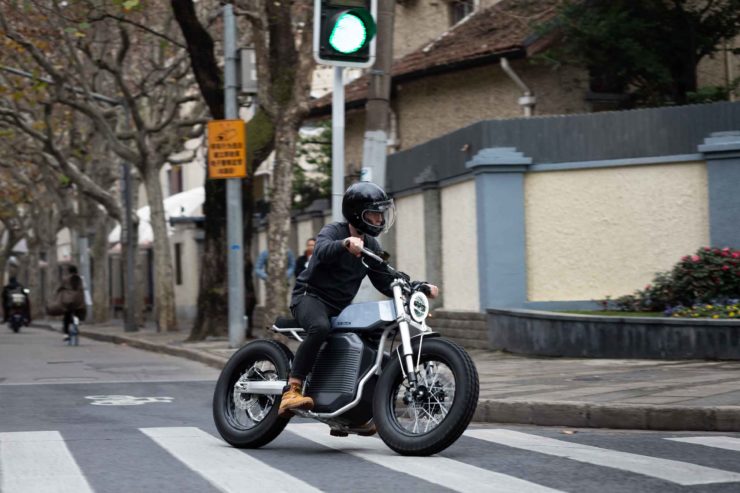
Homologation and Testing
There a bit of work to do until we get to market. The pack needs to be put through its paces, thoroughly tested, and there is still some modifications to do for a tank–glove box plus some tidbits here and there. However we are now entering the homologation stage and have begun working with DEKRA on the type approvals. The process and testing is complicated but they have been super supportive and great to work with, it’s much better to be making the changes now rather than later. The other big thing is the ABS system which takes a minimum of 9 months and for this we are working with BOSCH who have also been super helpful. You can’t just buy an existing ABS system and hack it on, the whole thing is painstakingly matched and tested under all conditions.
We will be releasing the road legal version in 2022. The good news is that we don’t need homologation and abs for the track and will begin really putting the bike through its paces this year on the Scandinavian flat tracking circuit with some world champions already lining up to have a thrash. It was Michel’s personal dream was to create an electric bike you could use as your daily ride and also have track days – ‘the simplicity is perfect, you can focus on riding and not be distracted by the loud noise from your gas engine’.
It’s been challenging, but we are getting there and can’t wait to see the eScrambler initially on the track and then the road!
Words by Matthew Waddick
Visit Switch Here
Follow Shanghai Customs on Facebook – Instagram
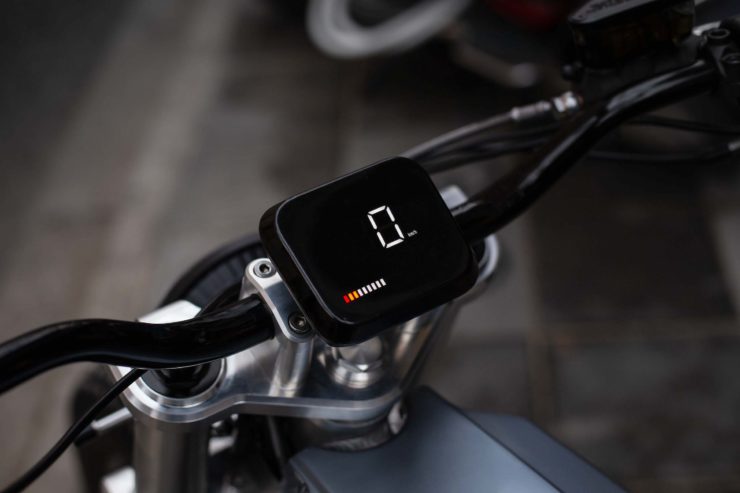
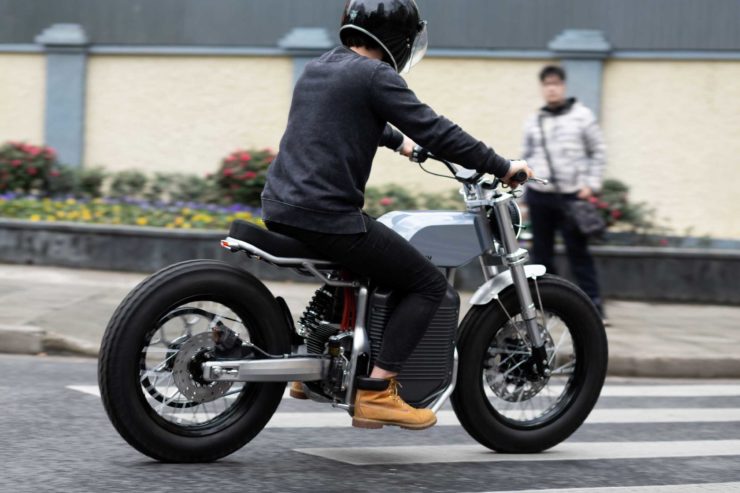
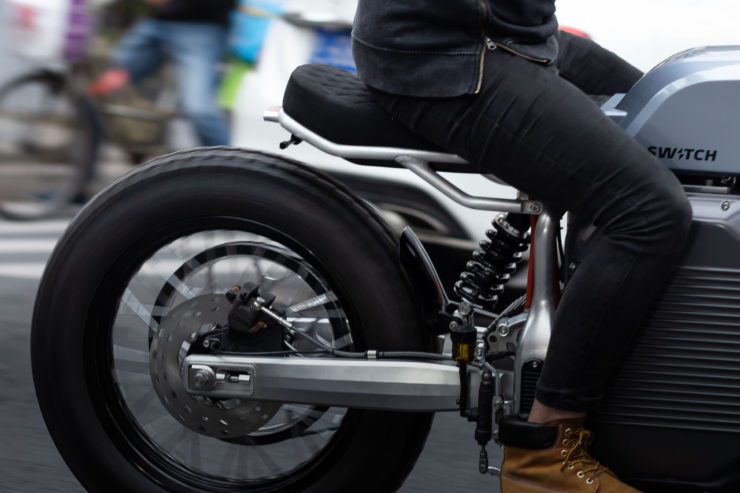
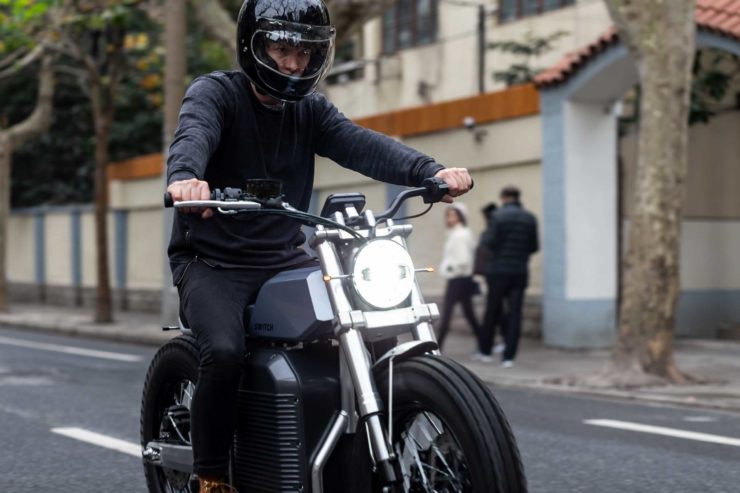
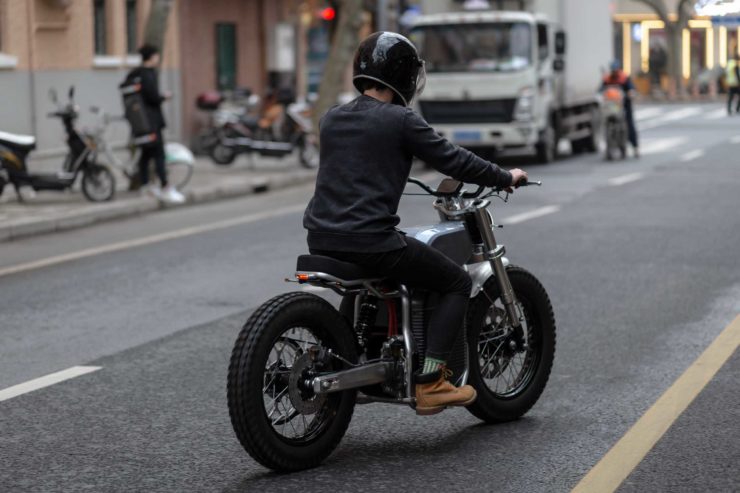
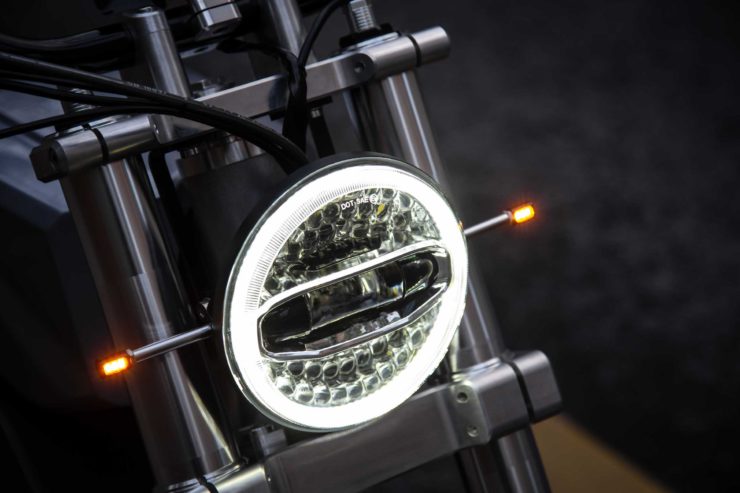
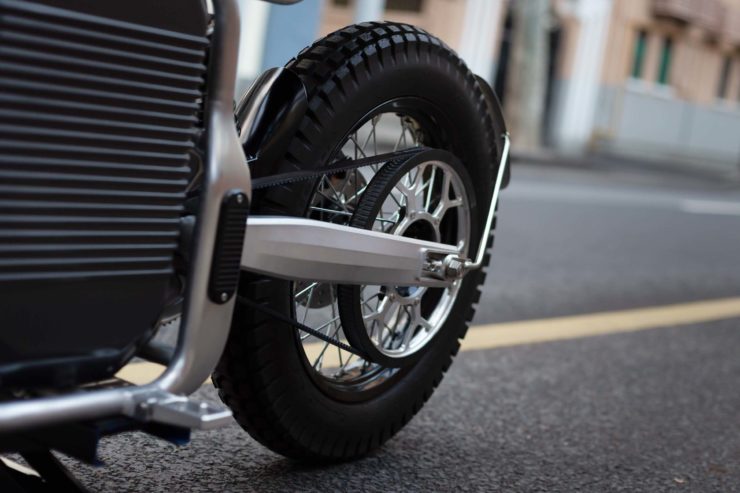
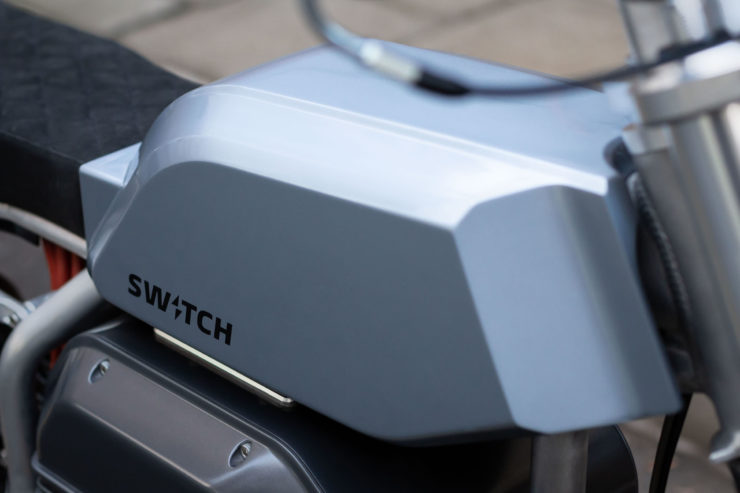
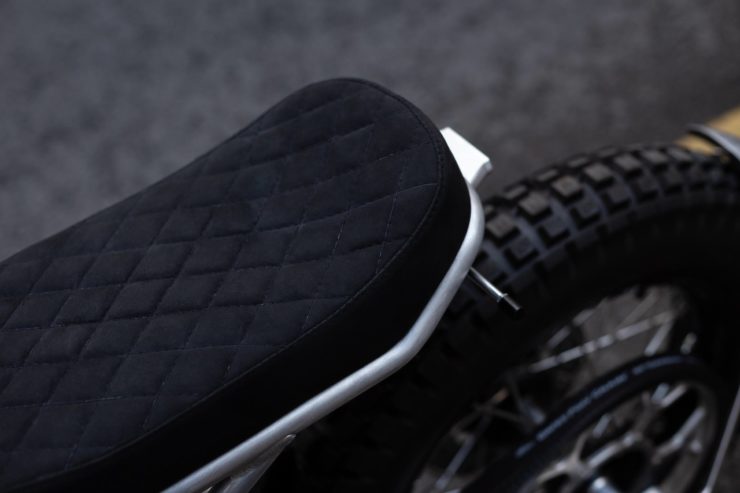
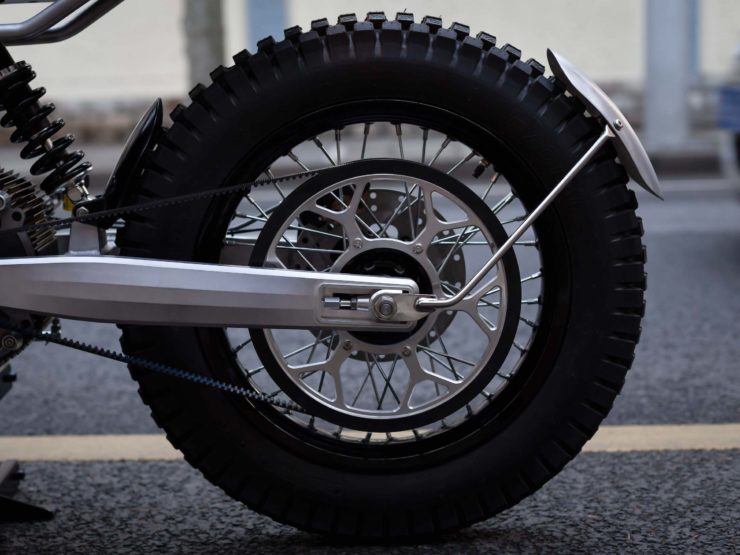
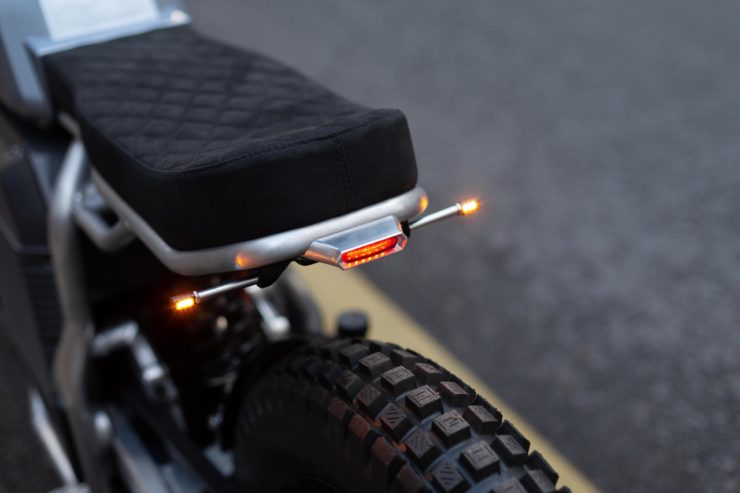
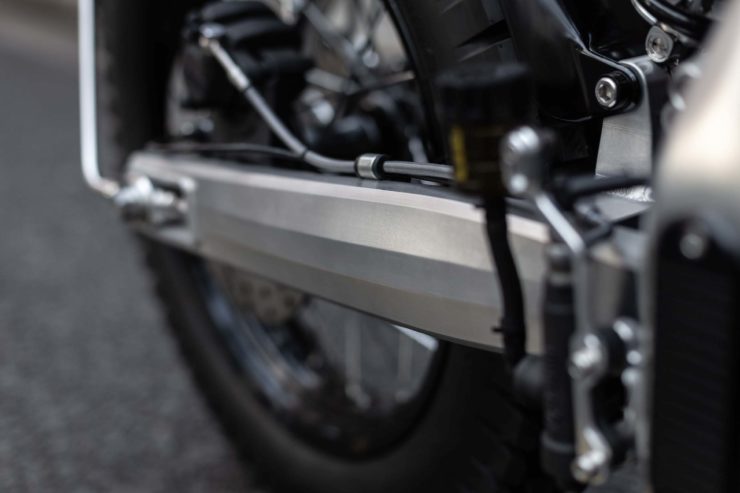
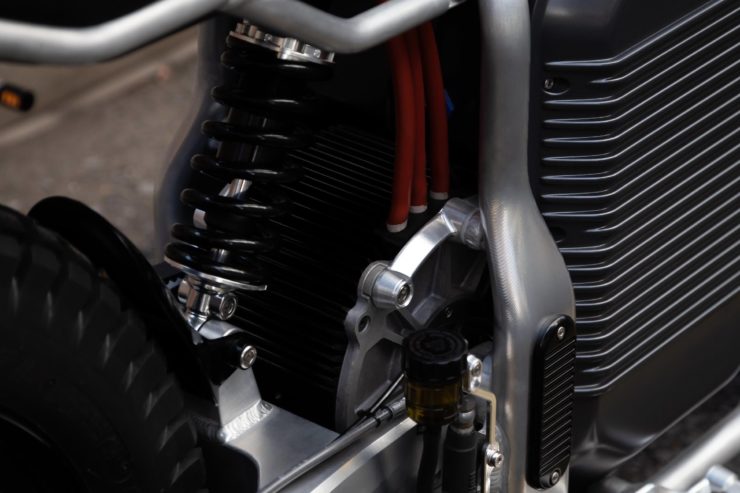
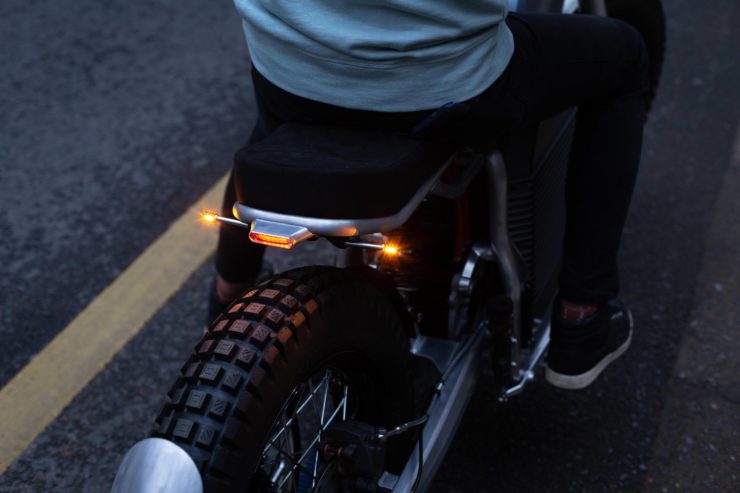
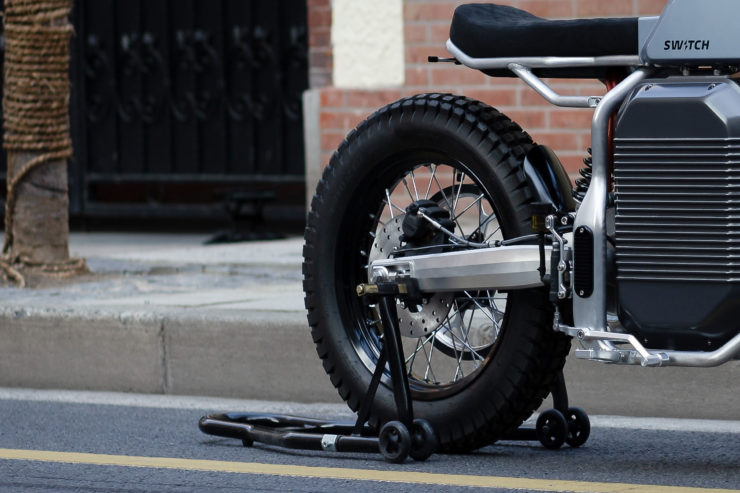
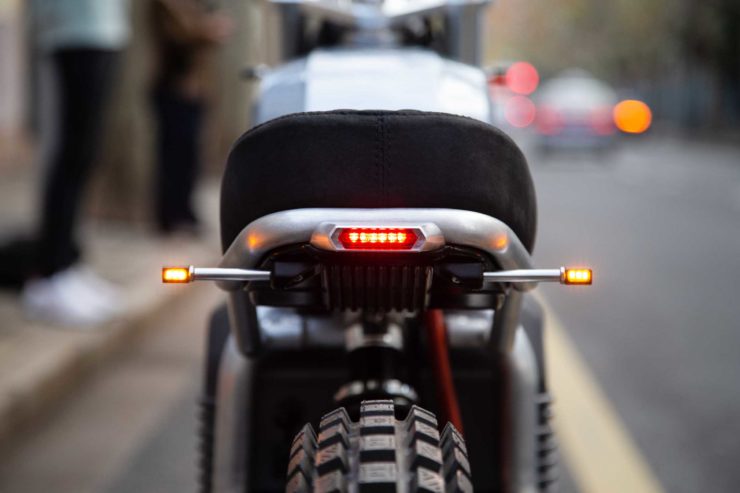
Via Bike EXIF

